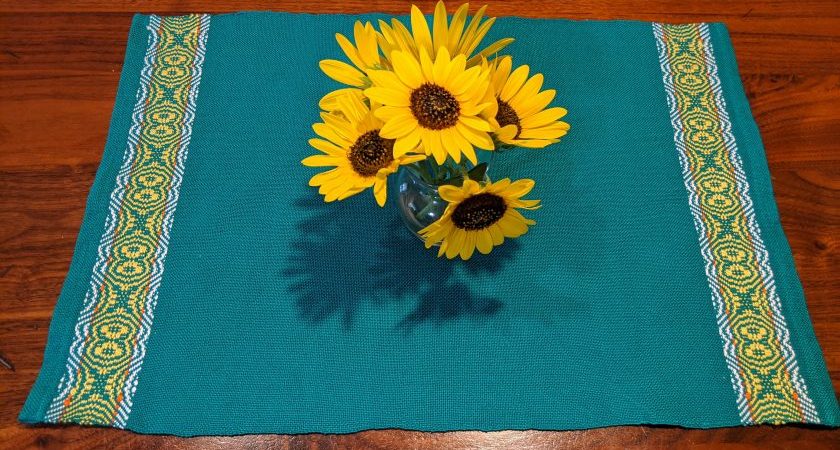I am writing a series of posts describing the process of weaving, from thread to cloth. The first post discusses how woven fabric differs from knitted fabric. Last time I talked about weaving. In this post, I talk about finishing, that is the process of turning the raw cloth into items that are ready to be used. (A video version of this post is on Youtube.)
Ok, so let’s say I have finally reached the end of my warp. It’s pretty exciting! I finally get to cut it off the loom. I also get to pull my cloth off the beam, the sticks clatter to the floor, I get to see all of my cloth for the first time!

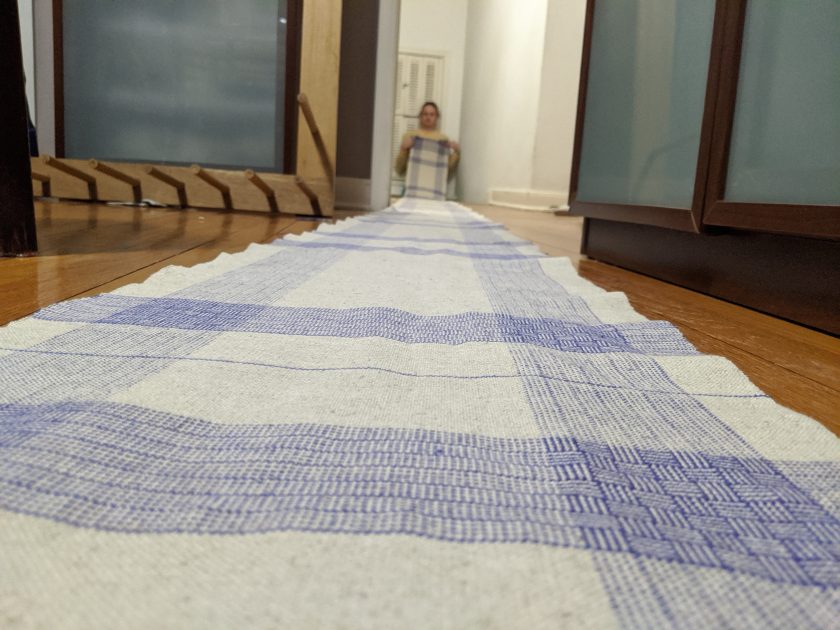
So, now I’m finished, right? Not quite. Cloth isn’t finished until it’s been “finished”. What this means will depend on what the cloth is made out of and what its purpose is. For most cloth made from plant fibers, like linen and cotton, the finishing will be wet finishing. This basically just means washing it; either by hand, or if the fabric is not delicate, by machine. For something like a wool blanket, I might actually full–felt– it a little bit to make it nice and fluffy. Some items, like rugs, will not require finishing, other than creating a hem.
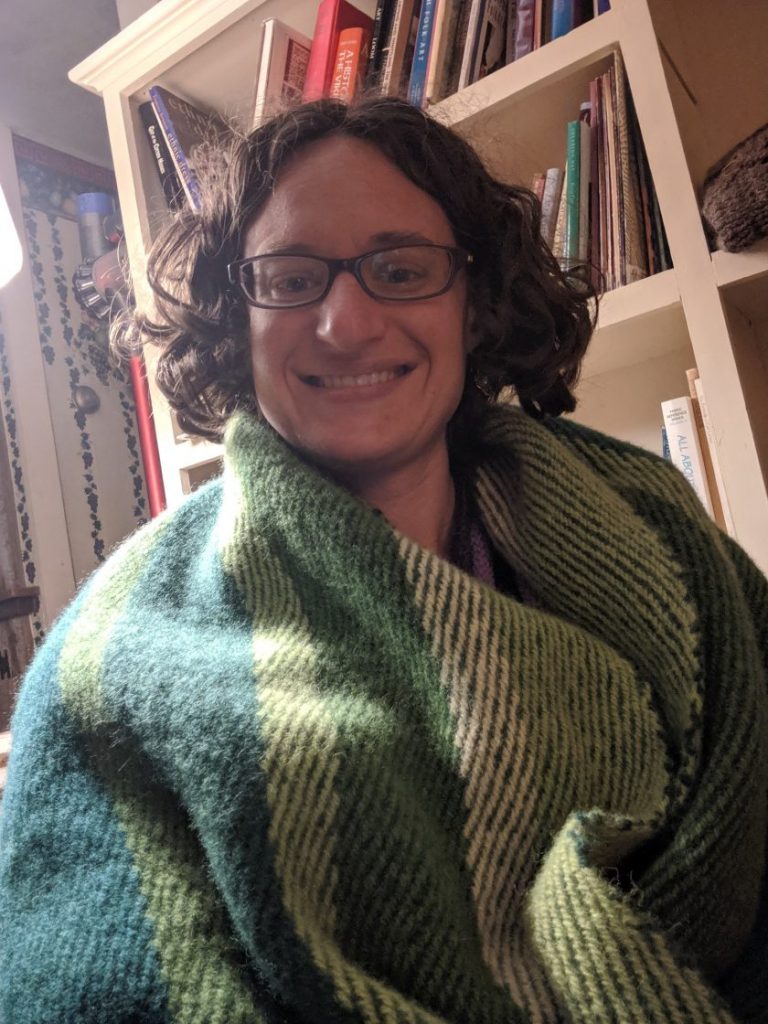
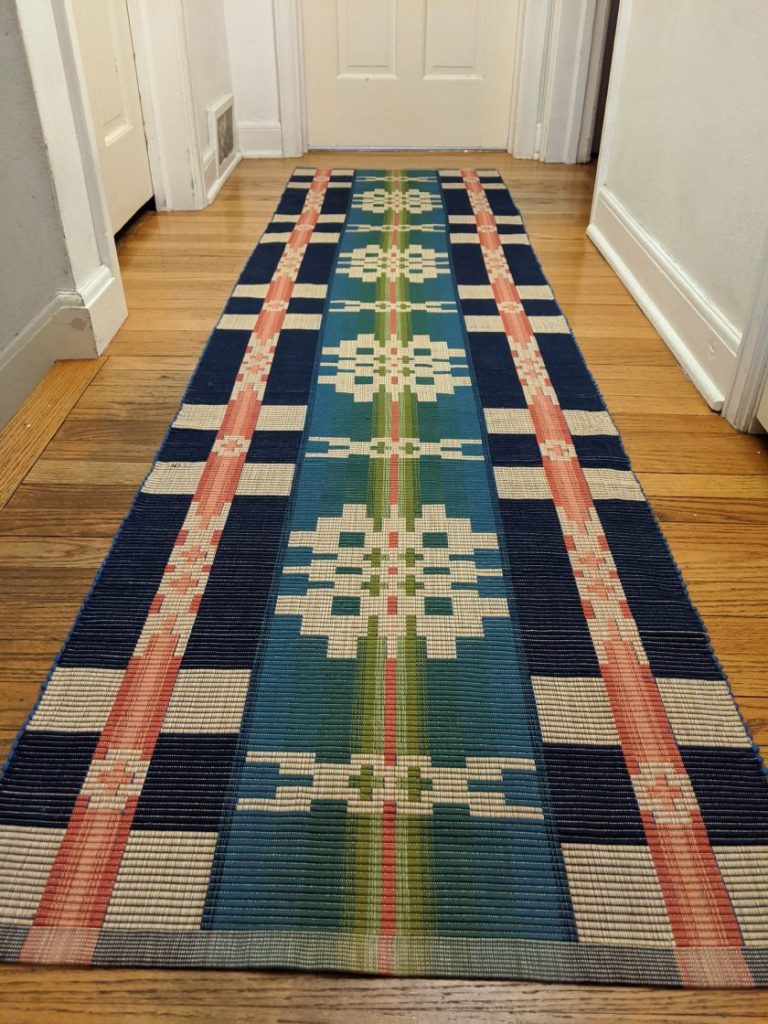
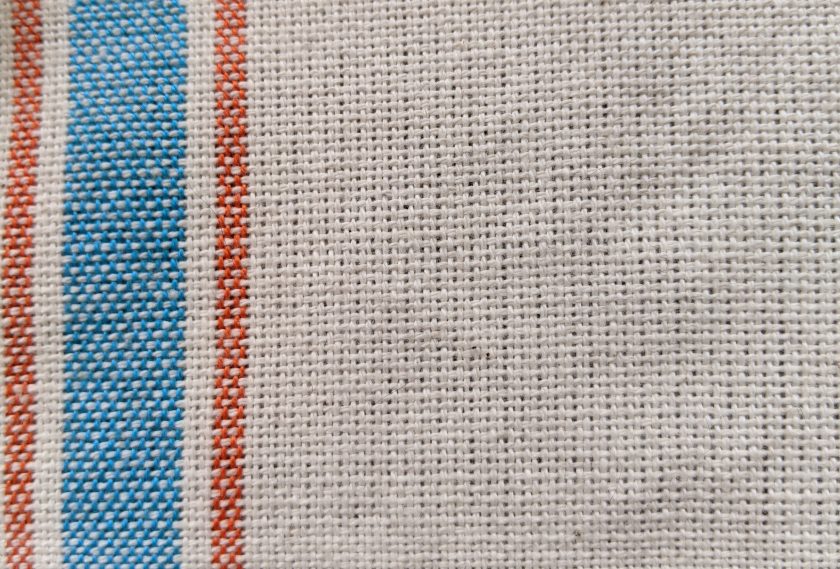
The main purpose of finishing is to meld the yarn into cloth: the cloth will usually shrink slightly and the threads relax a bit as they are no longer under tension. The most obvious example of this is reed marks. Usually when sleying the reed, I will have multiple threads per opening (dent) in the reed. This spacing is usually visible as I weave, but is not something I want in the finished cloth. Finishing should remove these marks.
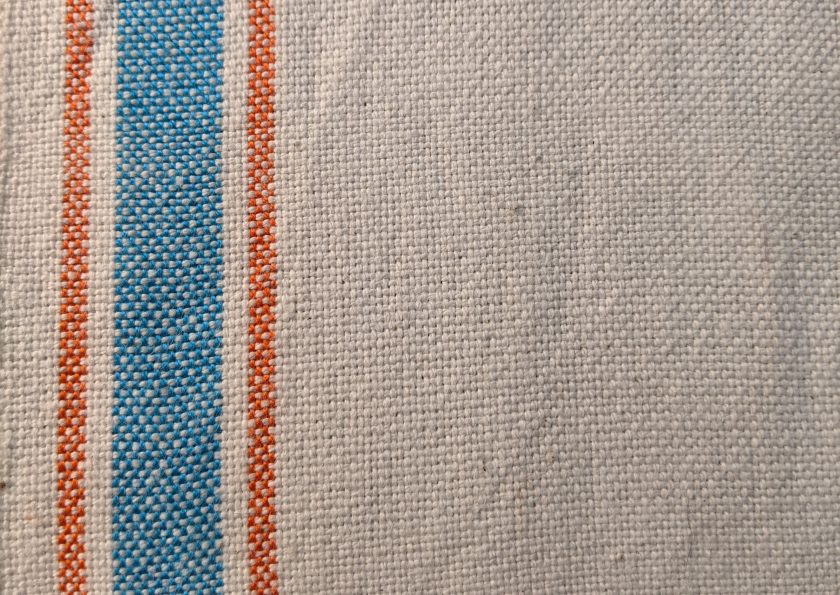
Certain weave structures will also show more drastic changes after finishing. For instance, deflected doubleweave looks very different on the loom as compared with after it is wet finished.
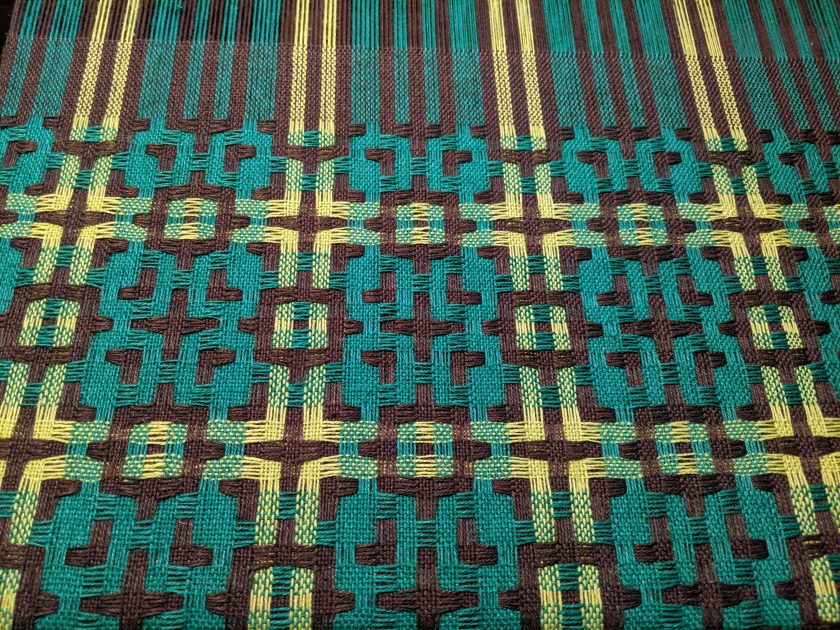
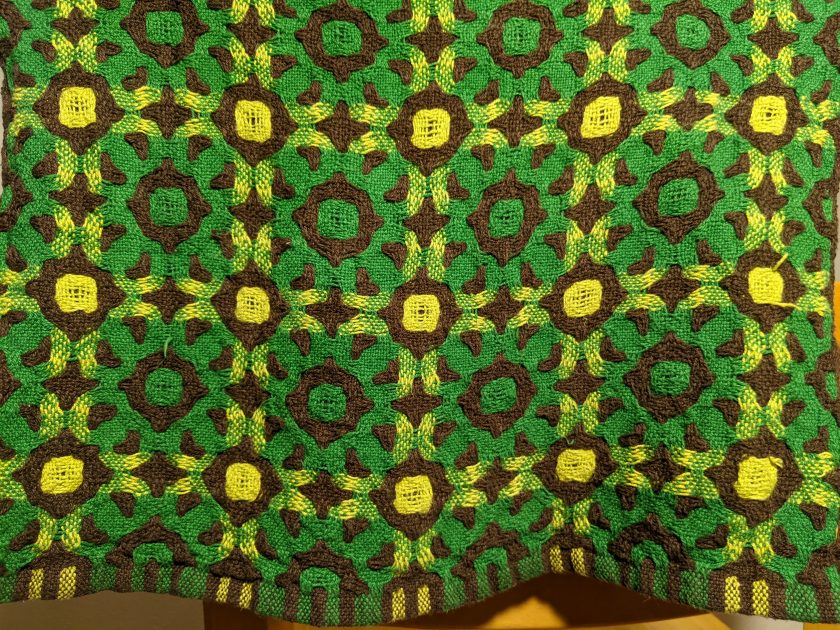
The other part of finishing is usually adding a hem. I most often do this before wet finishing. Hems can be as simple as turning the end up twice and stitching it down, either by hand or by machine. Another option is to twist the ends into fringe. There are also special techniques that can be used; here is one called oriental braid that is good for finishing rugs.
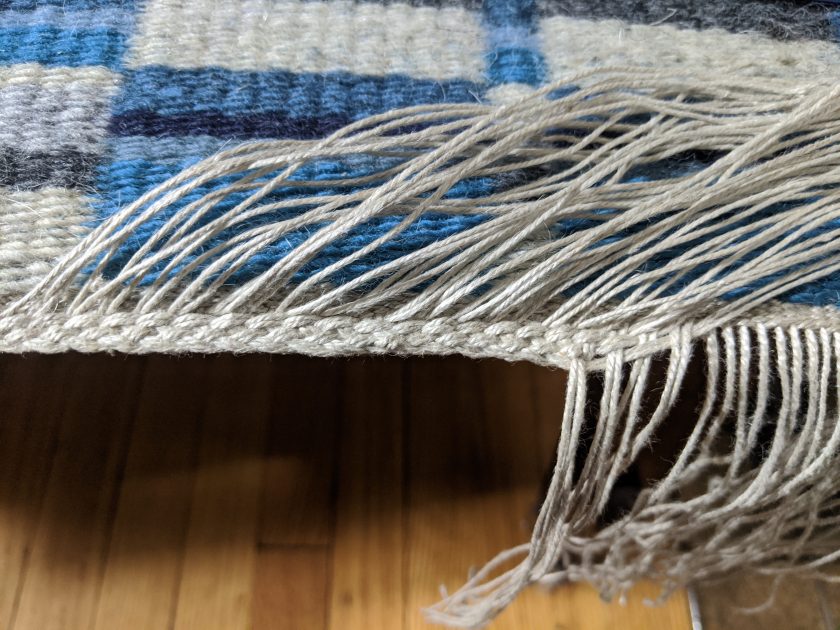
For the most part, finishing isn’t complicated, but cloth isn’t really useful until it has been finished. It is the final touch that transforms cloth into towels, napkins, tablecloths, or rugs. This brings my intro to weaving series, from thread to cloth, to a conclusion. But don’t worry, there’s always more weaving to do!
